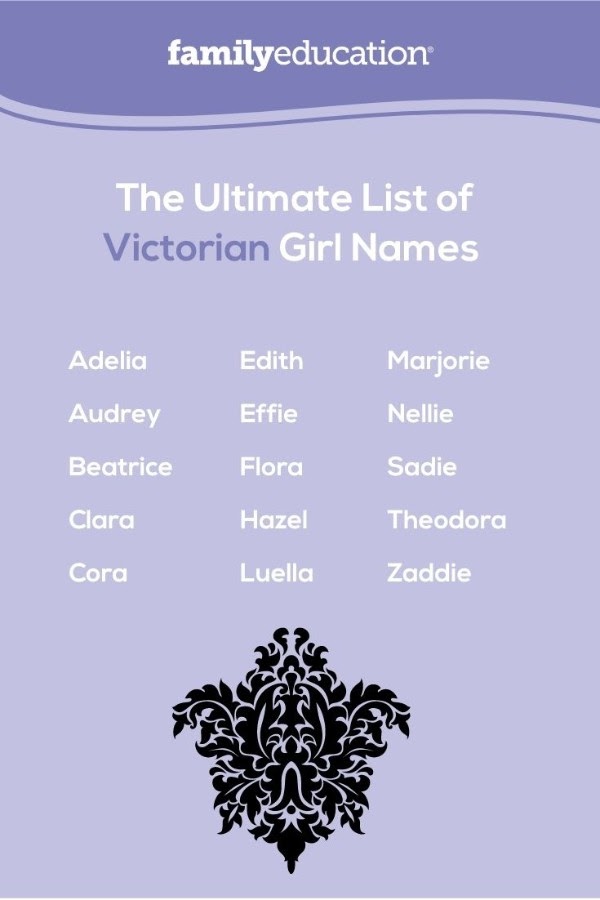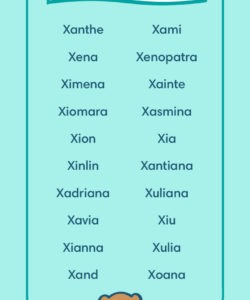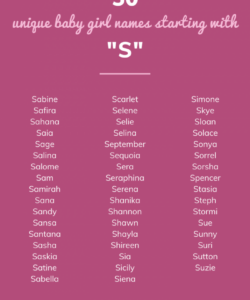The Victorian era, marked by social and economic changes, also witnessed the emergence of distinct naming trends. Girls’ names during this period often reflected the values and aspirations of the time. This article explores the most popular girls’ names of the Victorian era, shedding light on their significance and enduring charm.
During the early Victorian period (1837-1861), names such as Mary, Sarah, and Elizabeth reigned supreme. These biblical names were considered virtuous and respectable, reflecting the strong religious beliefs of the era. As the century progressed, however, more elaborate and romantic names gained popularity.
Floral Delights
The Victorian era witnessed a surge in the popularity of floral names. Flowers were highly revered, symbolizing purity, beauty, and innocence. Names like Rose, Lily, and Violet became ubiquitous, capturing the essence of the era’s romantic ideals. Other floral names that garnered favor included Daisy, Ivy, and Fern.
The name Rose, in particular, enjoyed immense popularity. It was not only considered beautiful but also carried religious significance, as it was often associated with the Virgin Mary. Lily, on the other hand, symbolized innocence and purity, making it a popular choice for those who sought to embody these Victorian values.

Literary Inspirations
Literature had a significant impact on Victorian naming trends. Characters from popular novels and poems influenced the choice of girls’ names. Names like Alice, Beatrice, and Emma became fashionable thanks to their literary origins. Alice, in particular, gained widespread recognition after the publication of Lewis Carroll’s famous tale, “Alice’s Adventures in Wonderland.” These literary names evoked a sense of enchantment and imagination, capturing the Victorian era’s fascination with storytelling.
Beatrice, inspired by the character in Dante’s “The Divine Comedy,” represented a blend of beauty, virtue, and intelligence. Emma, taken from Jane Austen’s beloved novel, symbolized a strong-willed and independent woman, reflecting the changing social roles of women during the Victorian period.
Celestial Influences
The Victorian era also saw the rise of celestial names. Parents sought to bestow upon their daughters names that reflected the vastness and mystery of the cosmos. Names like Stella, Celeste, and Luna gained popularity, symbolizing stars, heavens, and the moon. These names conveyed a sense of wonder and awe, capturing the Victorian era’s fascination with astronomy and the natural world.
Stella, meaning “star,” was particularly popular as it represented celestial guidance and protection. Celeste, derived from the Latin word for “heavenly,” evoked images of ethereal beauty and purity. Luna, associated with the moon, symbolized mystery, enchantment, and the feminine divine.
Conclusion
The popular girls’ names of the Victorian era provide a glimpse into the values, aspirations, and cultural influences of the time. From biblical names to floral delights, literary inspirations to celestial influences, these names reflected the social, religious, and aesthetic sensibilities of the era. While some of these names have faded in popularity over the years, others continue to endure as timeless classics, carrying with them the charm and legacy of the Victorian era.
Understanding the popular girls’ names of the Victorian era not only deepens our appreciation for the history of names but also offers insights into the cultural and societal forces that shaped the Victorian experience.



